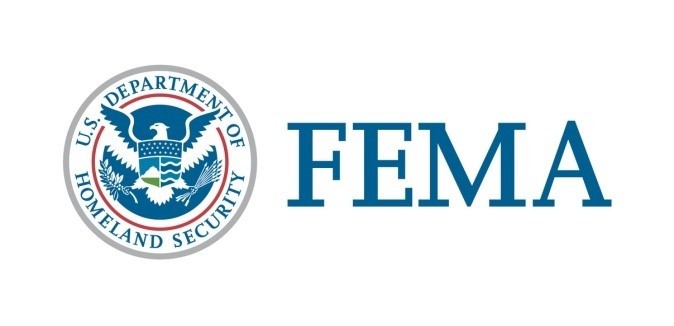FEMA Advisory: FEMA's National Preparedness Report Underscores Continued Threat of Climate Change (December 28, 2022)
FEMA Advisory
FEMA's National Preparedness Report Underscores Continued Threat of Climate Change
FEMA released the 2022 National Preparedness Report, revealing the impacts that climate change and associated natural disasters continue to have on emergency management capabilities and communities across the country. This year's report presents preparedness data through the lens of risks and capabilities and underscores the challenges that emergency managers face in addressing a continuously expanding risk environment, the ingenuity they have shown to rise to those challenges, and opportunities that remain to better prepare the nation. Emergency managers and whole community partners across the nation can look to this year's report to help support decisions about program priorities, resource allocations, and community actions.
What does the 2022 report say about the state of the nation's preparedness?
The report summarizes the state of national preparedness, discussing the risks the nation faces and how those risks drive whole-community emergency management capability requirements. The report includes the following findings, among others:
- Climate change continues to impact the nation and worsen existing vulnerabilities. The report found that in 2021, 92% of communities identified at least one natural hazard associated with climate change as being most stressful to emergency management capabilities in their assessments. The U.S. experienced a total of 20 billion-dollar climate and weather related disasters.
- The nation may not be adequately prepared to provide sufficient Body Recovery/Storage and Medical Care in the face of a catastrophic disaster. When comparing total Threat and Hazard Identification and Risk Assessment (THIRA) and Stakeholder Preparedness Review (SPR) data from 2021 against the National Capability Targets, the nation overall has the lowest capability in the Body Recovery/Storage and Medical Care target areas.
- Factors such as poverty, lack of access to transportation, and over-capacity housing occupancy continue to weaken the ability of individuals and communities to prevent injury, death and financial loss in a disaster
To better respond to these factors, FEMA has undertaken a series of initiatives to ensure that more communities, especially those that are the most vulnerable to the impacts of disasters, are better prepared when disaster strikes. For example, this National Preparedness Month, FEMA and the Ad Council created new Public Service Announcements developed specifically to reach Black and African American communities as part of FEMA's ongoing approach to advance accessibility and cultural competency in boosting the nation's preparedness. This campaign built on last year's campaign, which was designed to resonate with Latino communities. As a direct result of that campaign, Listo.gov — the Spanish version of Ready.gov — had a 500% increase in visits to the "Make a Plan" page and a 400% increase in visits to the "Build a Kit" page.
Additionally, FEMA's released its first-ever National Tribal Strategy this year to better address its responsibilities to federally recognized tribal nations when responding to and preparing for disasters affecting tribal lands. A key part of the strategy includes providing culturally competent services to Tribal Nations and translating FEMA products into Native American languages to ensure that everyone across Indian Country is prepared when disaster strikes.
Earlier this year, FEMA also implemented one of the largest updates in the past 10 years to its mobile app, largely driven by critical customer feedback. The updated app -- in English and Spanish -- gives users increased personalization options and help them take charge before, during and after disasters. This tool and others demonstrate FEMA's continued commitment to meeting people where they are by providing the resources they need in a user-friendly way, with the ultimate goal of increasing disaster preparedness.
These initiatives represent just a few examples of the actions the agency is taking to sustain a ready FEMA and a prepared nation.
The National Preparedness Report was established in Presidential Policy Directive/PPD-8, signed in March 30, 2011, which required the Secretary of Homeland Security to submit to the President the first national preparedness report based on the National Preparedness Goal. The THIRA/SPR methodology has changed since FEMA published the first report in 2012 and will not allow for measurement of percentage change in capability levels over the past decade. However, the most significant increases in community capability achievement are evident in areas related to 1) intelligence and information sharing, 2) supply chain integrity and security, and 3) access control and identity verification.
The report provides management opportunities outlining steps that can be taken by the whole community to address risks and capability gaps. These include detailed discussions regarding resources and best practices related to 1) building community-wide resilience to climate change impacts; 2) reducing physical and technological risks to critical infrastructure; and 3) increasing equity in individual and community preparedness.
The information in this report was compiled from open-source research, analysis of community THIRA/SPR data, and an interagency data call of more than 50 offices throughout federal government.
Contact Us
If you have any questions, please contact Office of External Affairs:
- Congressional Affairs at (202) 646-4500 or at FEMA-Congressional-Affairs@fema.dhs.gov
- Intergovernmental Affairs at (202) 646-3444 or at FEMA-IGA@fema.dhs.gov
- Tribal Affairs at (202) 646-3444 or at FEMA-Tribal@fema.dhs.gov
- Private Sector Engagement at (202) 646-3444 or at nbeoc@max.gov
Follow Us
Follow FEMA on social media at: FEMA Blog on fema.gov, @FEMA or @FEMAEspanol on Twitter, FEMA or FEMA Espanol on Facebook, @FEMA on Instagram, and via FEMA YouTube channel.
Also, follow Administrator Deanne Criswell on Twitter @FEMA_Deanne.
FEMA Mission
Helping people before, during, and after disasters.


Comments
Post a Comment